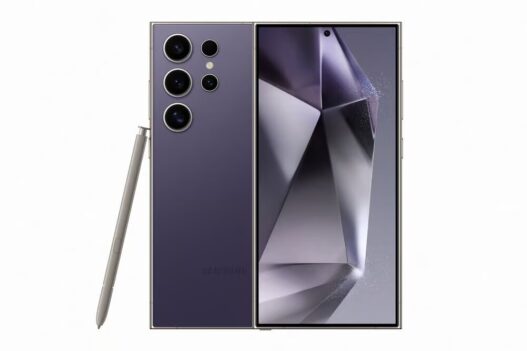In an era dominated by smartphones, the players in the mobile phone industry continuously shape our digital experiences and challenge our perceptions of technology. Among these leading companies, Samsung has established itself as a household name, reflecting innovation, style, and reliability. This in-depth blog post will assess Samsung’s mobile phone evolution, highlight its flagship devices, discuss its impact on the mobile industry, and look at the future trends that Samsung is likely to explore.
A Brief History of Samsung Mobile
To understand the journey of Samsung mobile phones, it’s essential to look back at the company’s history. Founded in 1938 by Lee Byung-chul as a trading company, Samsung has since diversified into numerous fields, including electronics, shipbuilding, and construction. However, it was the launch of the Samsung Galaxy series in 2009 that propelled the company to the forefront of the mobile industry.
Initially entering the mobile market in the 1980s, Samsung faced fierce competition and challenges but steadily built a reputation for quality and innovation. With the arrival of smartphones, Samsung shifted gears, adopting a competitive strategy that involved producing a wide range of devices—targeting varying consumers from budget to high-end.
The Innovation of the Galaxy Series
Galaxy S Series
The Samsung Galaxy S series was first introduced in 2010 with the Galaxy S, which showcased a sleek design, a vibrant Super AMOLED display, and a range of advanced features for its time. Each subsequent iteration has marked significant advancements in mobile technology, focusing on performance, design, and camera capabilities.
The Galaxy S series has consistently set benchmarks for other manufacturers. For instance, the Galaxy S4 introduced eye-tracking technology that allowed users to navigate the phone without touching the screen. The Galaxy S9 and S10 took the camera game to new heights with advanced AI capabilities for photography, including features like Super Slow-Mo and Night Mode.
Galaxy Note Series
In 2011, Samsung launched the Galaxy Note series, marking the emergence of the phablet category. This innovative device combined the best of smartphones and tablets, featuring a large display and the S Pen, which transformed the way users interacted with touchscreens.
The Galaxy Note series maintained a loyal fanbase, popular among creative professionals and users who appreciated productivity features. With each iteration, Samsung refined the S Pen’s functionality, enabling tasks like screen-off memos, translation, and more, further enhancing the user experience.
Mid-Range Phones
Samsung’s strategy has not been limited to flagship devices like the Galaxy S and Note series; it has also paved the way for mid-range smartphones with the Galaxy A and M series. With attractive pricing and impressive features, these devices provide consumers access to quality technology without breaking the bank.
The Galaxy A series, in particular, has made waves with its focus on style, camera performance, and battery life, appealing primarily to millennials and younger audiences. The Galaxy M series offered robust specifications tailored for consumers who prioritize performance and entertainment, emphasizing features such as large displays and powerful batteries.
Technological Innovations
Samsung has remained at the forefront of mobile technology through a combination of research, development, and strategic partnerships. The introduction of 5G technology, foldable screens, and advancements in AI has redefined the smartphone experience.
5G Connectivity
Samsung anticipated the arrival of 5G technology and was among the first companies to launch 5G-enabled smartphones, including the Galaxy S10 5G and Galaxy Note 10. The faster speeds, reduced latency, and improved connectivity have opened up new avenues for app development, gaming, and media consumption.
Foldable Phones
Samsung’s innovative spirit truly shone with the launch of foldable smartphones. The Galaxy Fold, released in 2019, showcased the potential of foldable displays, providing users with a seamless transition from phone to tablet. Although initial challenges arose, Samsung continued to refine its technology and successfully launched the Galaxy Z Flip and Z Fold series, garnering attention for their unique designs and versatile functionality.
AI and Camera Technology
Samsung’s commitment to enhancing user experience is evident in its camera technology and the incorporation of artificial intelligence. The integration of AI in photography has enabled features like scene recognition, portrait mode, and super-resolution images. The Galaxy S21 Ultra, for instance, features a 108MP camera capable of incredible detail and flexibility, allowing users to shoot in various conditions while retaining stunning quality.
Impact on the Mobile Industry
Samsung’s influence extends well beyond its devices. The company’s strategy shaped industry standards, inspiring new technologies and driving competition among manufacturers.
Setting Industry Trends
Through innovative designs, Samsung has pushed competitors to rethink their product philosophies. The introduction of larger screens, multitasking capabilities, and advanced camera features has become the norm in smartphones today. Other companies followed suit, adopting similar technologies and strategies to offer users high-quality devices.
Sustainability Efforts
As technology evolves, so do consumer expectations regarding sustainability. Samsung has made commitments to reduce its environmental impact through sustainable practices, such as utilizing recyclable materials in its products and packaging. The introduction of the Galaxy Upcycling program promoted reusing old devices, encouraging users to participate in sustainable practices.
Influencing App Development
With the large user base of Samsung smartphones, the company has significantly influenced app development. As devices feature advanced hardware and unique functionalities, developers are inspired to create apps catering to users’ needs, including gaming, productivity, and lifestyle applications. This expanding app ecosystem ultimately enhances the overall user experience.
Consumer Experience and Support
Another element of Samsung’s success is its focus on consumer experience and customer support. The company has consistently worked to enhance the user experience through both software and hardware.
One UI and Software Updates
Samsung’s One UI, introduced with Galaxy devices, emphasizes intuitive design and usability. This user interface aims to simplify navigation, making it easier for consumers to interact with their devices. Regular software updates and the introduction of new features contribute to maintaining device longevity, allowing users to enjoy the latest technological advancements.
Customer Support
Samsung offers comprehensive customer support through various channels, including online resources, in-store assistance, and community forums. The Samsung Members app provides users with troubleshooting tools, diagnostic capabilities, and access to exclusive deals and promotions. This commitment to customer support enhances brand loyalty, making Samsung a trustworthy option for mobile consumers.
Future Trends and Innovations
As smartphone technology continues to advance rapidly, what does the future hold for Samsung Mobile? The company has already laid the groundwork for several emerging technologies, suggesting a dynamic future for the mobile industry.
Integration of AI and Machine Learning
The utilization of AI and machine learning will likely become even more integral in Samsung’s future devices, particularly in enhancing user experience, optimizing performance, and personalizing user interactions. Features such as predictive text, smart camera modes, and improved voice assistants could see significant advancements.
Investment in 6G Technology
While 5G is still becoming widely adopted, Samsung is already investing in research and development for 6G technology. This next level of connectivity could revolutionize mobile communication, enabling faster speeds, lower latency, and even more immersive experiences like virtual and augmented reality.
Continued Focus on Sustainability
Given the increasing importance of eco-conscious consumerism, Samsung is expected to further enhance its sustainability initiatives. This could involve producing devices with more environmentally friendly materials, improving recycling programs, and sourcing energy from renewable resources for manufacturing.
Expansion of the Foldable Market
With the successful launch of the Galaxy Z series, Samsung is likely to continue exploring foldable smartphone technology. Future iterations could bring improvements in durability, design, and functionality, attracting a wider range of consumers while setting the standard for the foldable smartphone market.
Integration with IoT and Smart Devices
The Internet of Things (IoT) is rapidly integrating into everyday life. Samsung may explore further connectivity with its smart devices, such as wearables, home appliances, and smart TVs. This interconnected experience could promote a holistic approach to technology, where all devices reflect a unified ecosystem.
Final Thoughts
In conclusion, the evolution and impact of Samsung Mobile encapsulate a narrative of innovation, adaptability, and resilience. Its journey reflects not just the growth of a giant in the mobile industry, but also the ever-changing landscape of technology itself. As we look to the future, Samsung’s commitment to innovation and quality assures us that its story is far from over. The next chapter promises to be just as exciting, as we witness how Samsung continues to shape the mobile industry and influence the global marketplace in the years to come.
Samsung Mobile is not just a product or a brand. It is a testament to the power of innovation and the relentless pursuit of excellence. A model for aspiring companies and a beacon for consumers seeking cutting-edge technology. As we celebrate the achievements of Samsung, we also anticipate the next wave of innovations that will undoubtedly continue to transform our lives.











